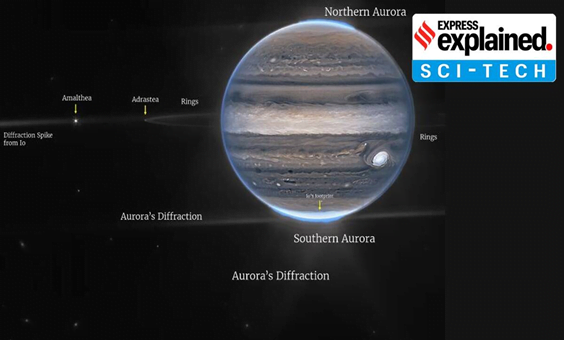Science and Technology
In News: The James Webb Space Telescope, NASA’s latest and most powerful telescope, has captured new images of our solar system’s largest planet, Jupiter, presenting it in a never-before-seen light.

Unprecedented view
- While most of us are familiar with the yellow and reddish-brown gas giant,the telescope’s Near-Infrared Camera, with its specialized infrared filters, has shown Jupiter encompassed in blue, green, white, yellow, and orange hues.
- Since infrared light is not visible to the human eye, the images were artificially colored to match those on the visible spectrum, so that the planet’s distinctive features could stand out.
- The brightness here indicates high altitude — so the Great Red Spot has high-altitude hazes, as does the equatorial regio.
- The numerous bright white ‘spots’ and ‘streaks’ are likely very high-altitude cloud tops of condensed convective storms.
The Webb Telescope
- NASA’s $10 billion James Webb Telescope was developed with the assistance of the European Space Agency and the Canadian Space Agency.
- It was launched to space in December2021 and is currently observing from Lagrange point 2, approximately 1.5 million km beyond Earth’s orbit around the Sun.
Source: Indian Express













